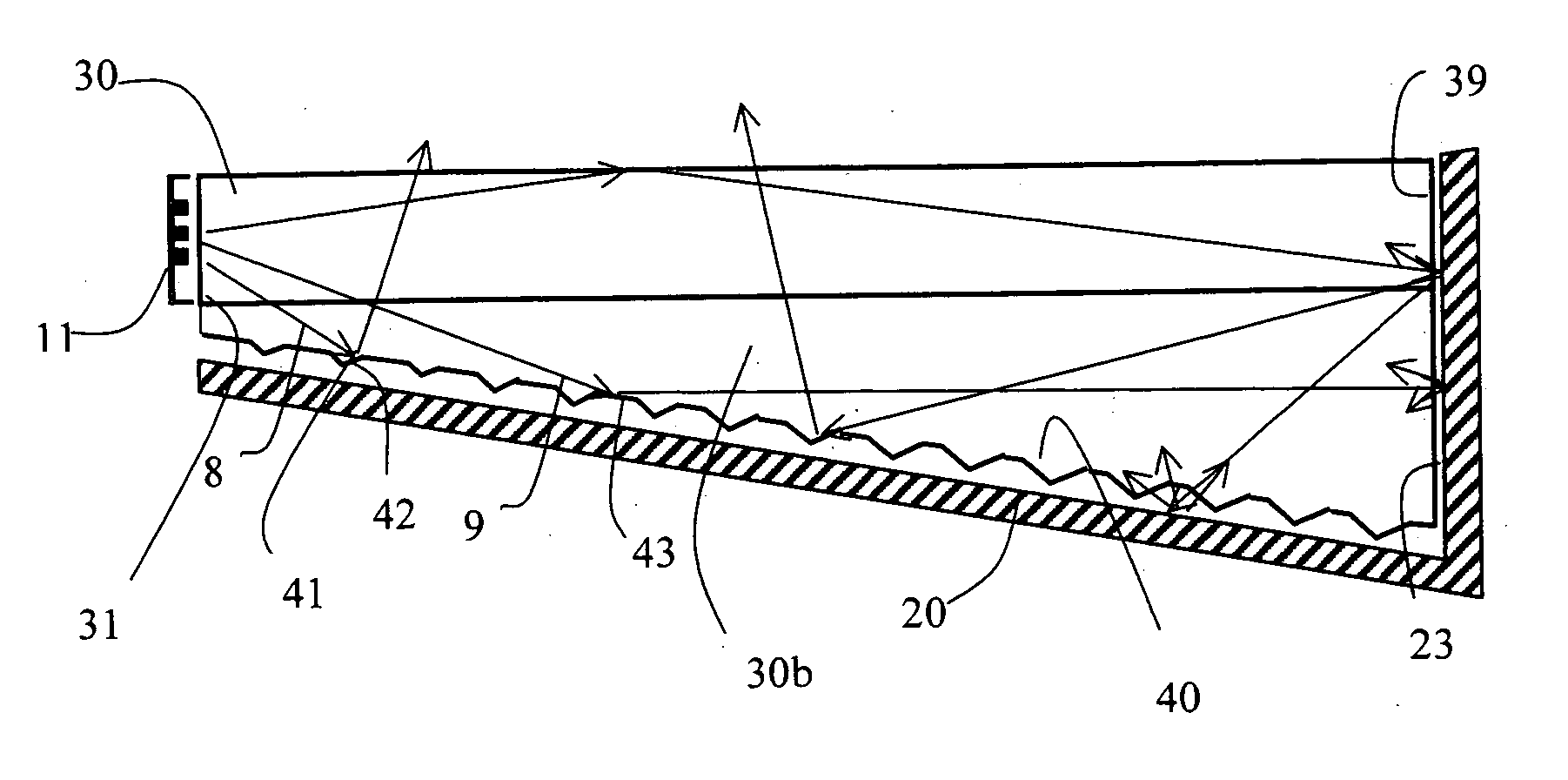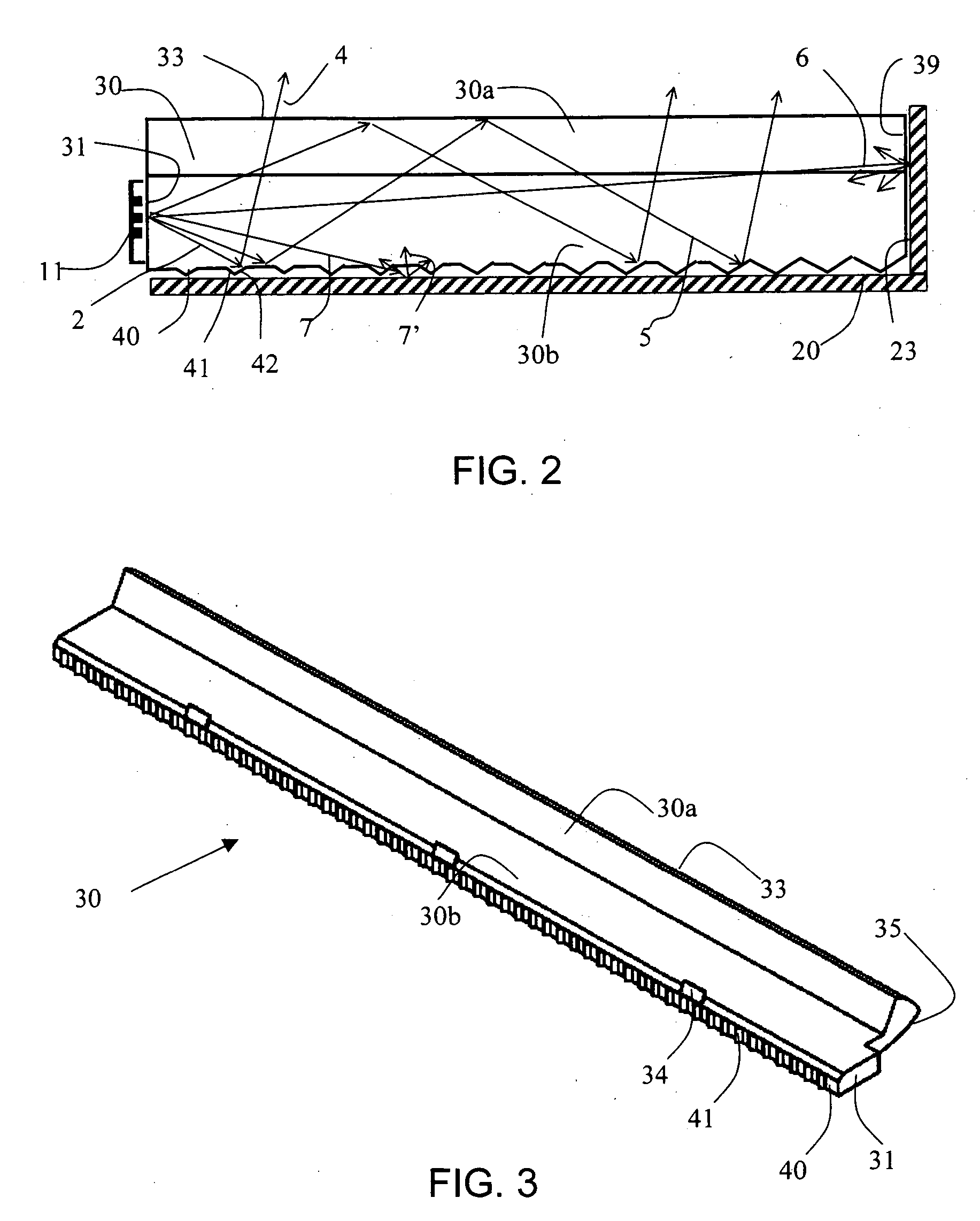Illumination apparatus providing longitudinal illumination
a technology of illumination apparatus and longitudinal illumination, which is applied in the direction of lighting and heating apparatus, instruments, transportation and packaging, etc., can solve the problems of limited inability to achieve modulation of local light flux density, and inability to achieve high frequency intensity modulation in illumination planes. achieve high reflection and uniform illumination
- Summary
- Abstract
- Description
- Claims
- Application Information
AI Technical Summary
Benefits of technology
Problems solved by technology
Method used
Image
Examples
Embodiment Construction
[0025] The present invention is directed to an high efficient illumination device that advantageously provides, in a novel and unobvious way, a substantially longitudinal, uniform, and concentrated light output. The illumination device is preferably constructed as a three-part assembly comprising at least one light source unit, a light guide and a reflective envelope that receives the light guide. The light guide has first and second optically coupled sub-guides. A light-extracting feature is integrated into the second sub-guide and optically coupled to an entrance opening of the first sub-guide. The light-extracting feature redirects light within the light guide to form an effective light-emitting object at the entrance opening. Light from that effective light emitting object is projected out of the light guide by light-concentrating optics provided by the internal surfaces of the first sub-guide. The first sub-guide has a predetermined cross-sectional shape and a substantially uni...
PUM
 Login to View More
Login to View More Abstract
Description
Claims
Application Information
 Login to View More
Login to View More - R&D
- Intellectual Property
- Life Sciences
- Materials
- Tech Scout
- Unparalleled Data Quality
- Higher Quality Content
- 60% Fewer Hallucinations
Browse by: Latest US Patents, China's latest patents, Technical Efficacy Thesaurus, Application Domain, Technology Topic, Popular Technical Reports.
© 2025 PatSnap. All rights reserved.Legal|Privacy policy|Modern Slavery Act Transparency Statement|Sitemap|About US| Contact US: help@patsnap.com



